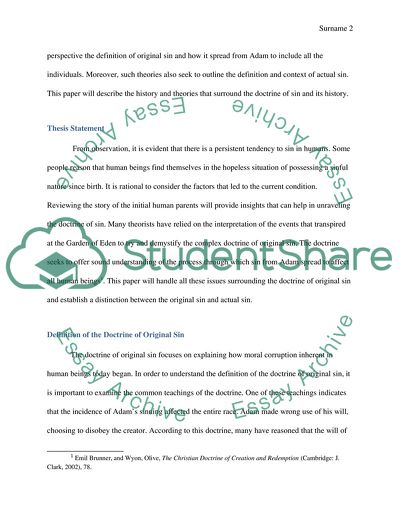Cite this document
(The History and Theories that Surround the Doctrine of Sin Essay Example | Topics and Well Written Essays - 3500 words, n.d.)
The History and Theories that Surround the Doctrine of Sin Essay Example | Topics and Well Written Essays - 3500 words. https://studentshare.org/religion-and-theology/1797034-origin-of-sin-vs-actual-sin
The History and Theories that Surround the Doctrine of Sin Essay Example | Topics and Well Written Essays - 3500 words. https://studentshare.org/religion-and-theology/1797034-origin-of-sin-vs-actual-sin
(The History and Theories That Surround the Doctrine of Sin Essay Example | Topics and Well Written Essays - 3500 Words)
The History and Theories That Surround the Doctrine of Sin Essay Example | Topics and Well Written Essays - 3500 Words. https://studentshare.org/religion-and-theology/1797034-origin-of-sin-vs-actual-sin.
The History and Theories That Surround the Doctrine of Sin Essay Example | Topics and Well Written Essays - 3500 Words. https://studentshare.org/religion-and-theology/1797034-origin-of-sin-vs-actual-sin.
“The History and Theories That Surround the Doctrine of Sin Essay Example | Topics and Well Written Essays - 3500 Words”. https://studentshare.org/religion-and-theology/1797034-origin-of-sin-vs-actual-sin.


